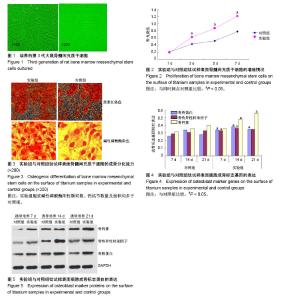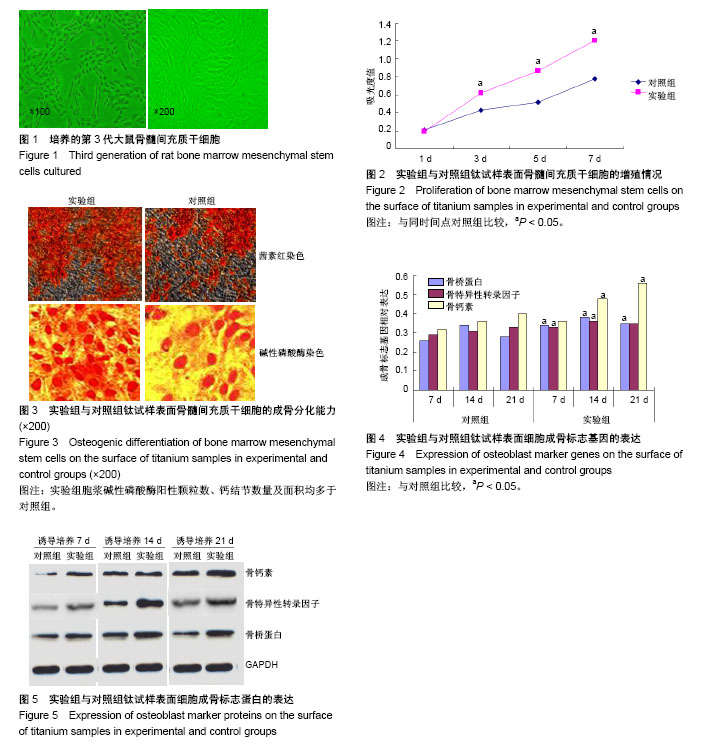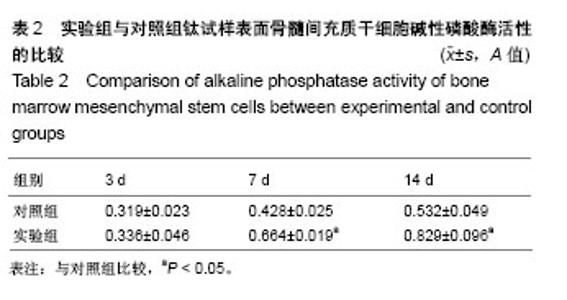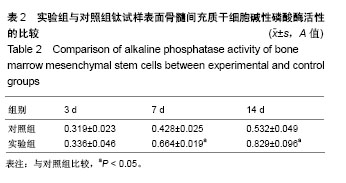| [1] Tsutsumi K, Horiuchi T, Hongo K. Mechanical evaluation of cerebral aneurysm clip scissoring phenomenon: comparison of titanium alloy and cobalt alloy. J Mater Sci Mater Med. 2017;28(10):159.[2] Francaviglia N, Maugeri R, Odierna Contino A, et al. Skull Bone Defects Reconstruction with Custom-Made Titanium Graft shaped with Electron Beam Melting Technology: Preliminary Experience in a Series of Ten Patients. Acta Neurochir Suppl. 2017;124:137-141. [3] Xing H, Wu J, Zhou L, et al. Natural teeth-retained splint based on a patient-specific 3D-printed mandible used for implant surgery and vestibuloplasty: A case report. Medicine (Baltimore). 2017;96(48):e8812.[4] Hou PJ, Ou KL, Wang CC, et al. Hybrid micro/nanostructural surface offering improved stress distribution and enhanced osseointegration properties of the biomedical titanium implant. J Mech Behav Biomed Mater. 2018;79:173-180.[5] 周屹立,丁仲鹃,唐玲.钛片表面粗糙度和氧化膜对成骨细胞增殖和分化的影响[J].上海口腔医学,2013,22(3):282-286.[6] 高岩.不同波长紫外线激发微弧氧化纯钛表面光催化作用的体外生物活性研究[D].广州:南方医科大学,2012.[7] Ma T, Ge XY, Hao KY, et al. Simple 3,4-Dihydroxy-L- Phenylalanine Surface Modification Enhances Titanium Implant Osseointegration in Ovariectomized Rats. Sci Rep. 2017;7(1):17849. [8] 王婷婷,王丽娜,范震.钛种植体阳极氧化的研究[J].口腔颌面外科杂志,2016,26(4):290-294.[9] 朱晟译.钛种植体表面纳米改性方法及研究进展[J].中国口腔种植学杂志,2011,16(3): 180-182,187.[10] Li NB, Sun SJ, Bai HY, et al. Preparation of well-distributed titania nanopillar arrays on Ti6Al4V surface by induction heating for enhancing osteogenic differentiation of stem cells. Nanotechnology. 2018;29(4):045101. [11] 赵旭,卢燃,陈溯.TiO2纳米管负载BMP-2指节肽对骨髓间充质干细胞增殖与分化的影响[J].北京口腔医学,2017,25(5):241-244.[12] Giorgi L, Dikonimos T, Giorgi R, et al. Electrochemical synthesis of self-organized TiO2 crystalline nanotubes without annealing. Nanotechnology. 2018;29(9):095604.[13] 付晓龙,李莺,李宝娥,等.纯钛表面阳极氧化增强成骨细胞生物活性及护骨素基因的表达[J].中国组织工程研究, 2014,18(39): 6240-6245.[14] 陈岩,赵文婷,咏梅,等.正畸微种植体表面阳极氧化处理对周围骨组织的影响[J].中华口腔正畸学杂志,2012,19(3):149-151.[15] Huang B, Guang M, Ye J, et al. Effect of Increasing Doses of γ-Radiation on Bone Marrow Stromal Cells Grown on Smooth and Rough Titanium Surfaces. Stem Cells Int. 2015;2015: 359416. [16] Tsuchiya S, Hara K, Ikeno M, et al. Rat bone marrow stromal cell-conditioned medium promotes early osseointegration of titanium implants. Int J Oral Maxillofac Implants.2013;28(5): 1360-1369. [17] Tang Z, Xie Y, Yang F, et al. Porous tantalum coatings prepared by vacuum plasma spraying enhance bmscs osteogenic differentiation and bone regeneration in vitro and in vivo. PLoS One. 2013;8(6):e66263.[18] Colombo JS, Carley A, Fleming GJ, et al. Osteogenic potential of bone marrow stromal cells on smooth, roughened, and tricalcium phosphate-modified titanium alloy surfaces. Int J Oral Maxillofac Implants. 2012;27(5):1029-1042.[19] Wang H, Jiang Z, Zhang J, et al. Enhanced osteogenic differentiation of rat bone marrow mesenchymal stem cells on titanium substrates by inhibiting Notch3. Arch Oral Biol. 2017; 80:34-40. [20] Bressel TAB, de Queiroz JDF, Gomes Moreira SM, et al. Laser-modified titanium surfaces enhance the osteogenic differentiation of human mesenchymal stem cells. Stem Cell Res Ther. 2017; 8(1):269.[21] Arpornmaeklong P, Pripatnanont P, Chookiatsiri C, et al. Effects of Titanium Surface Microtopography and Simvastatin on Growth and Osteogenic Differentiation of Human Mesenchymal Stem Cells in Estrogen-Deprived Cell Culture. Int J Oral Maxillofac Implants. 2017;32(1):e35-e46. [22] Özdal-Kurt F, Tu?lu I, Vatansever HS, et al. The effect of different implant biomaterials on the behavior of canine bone marrow stromal cells during their differentiation into osteoblasts. Biotech Histochem. 2016;91(6):412-422. [23] Zhang W, Cao H, Zhang X, et al. A strontium-incorporated nanoporous titanium implant surface for rapid osseointegration. Nanoscale. 2016;8(9):5291-5301. [24] Li G, Cao H, Zhang W, et al. Enhanced Osseointegration of Hierarchical Micro/Nanotopographic Titanium Fabricated by Microarc Oxidation and Electrochemical Treatment. ACS Appl Mater Interfaces. 2016;8(6):3840-3852.[25] 刘娜,陈丽丽.骨质疏松状态下钛种植体周围骨形成的动态观察[J].全科医学临床与教育,2017,15(2):129-131,143.[26] 孙鑫,徐金标,魏军水.热处理提高钛种植体表面成骨细胞活性的实验研究[J].健康研究,2017,37(4):393-395,399.[27] 施育才,严洪海.不同粗糙表面的纯钛种植体表面的体外细胞培养评价[J].中国口腔种植学杂志,2010,15(2):55-58,62.[28] 张君红,姜海行,覃山羽,等.全骨髓细胞贴壁法分离与培养大鼠骨髓间充质干细胞的多向分化能力[J].中国组织工程研究, 2012, 16(36):6685-6689.[29] 王婧,顾新华.种植体基台表面性状及其对软组织附着的影响[J].口腔医学,2017,37(10):942-945.[30] Nakatsu Y, Nakagawa F, Higashi S, et al. Effect of acetaminophen on osteoblastic differentiation and migration of MC3T3-E1 cells. Pharmacol Rep. 2018;70(1):29-36.[31] Nemoto A, Chosa N, Kyakumoto S, et al. Water-soluble factors eluated from surface pre-reacted glass-ionomer filler promote osteoblastic differentiation of human mesenchymal stem cells. Mol Med Rep. 2018;17(3):3448-3454.[32] Xu FT, Li HM, Yin QS, et al. Effect of activated autologous platelet-rich plasma on proliferation and osteogenic differentiation of human adipose-derived stem cells in vitro. Am J Transl Res. 2015;7(2):257-270.[33] 曹蓉蓉,马俊玥,李淑慧,等.TNF-α对鼠根尖乳头干细胞增殖及多向分化能力的影响[J].重庆医学,2017,46(14):1874-1877.[34] Teng S, Liu C, Guenther D, et al. Influence of biomechanical and biochemical stimulation on the proliferation and differentiation of bone marrow stromal cells seeded on polyurethane scaffolds. Exp Ther Med. 2016;11(6): 2086-2094.[35] McKee MD, Pedraza CE, Kaartinen MT. Osteopontin and wound healing in bone. Cells Tissues Organs. 2011;194(2-4): 313-319.[36] 史欣,张鹏飞,孙玉芬,等.骨桥蛋白影响矿化液诱导牙髓干细胞成骨分化能力的研究[J].口腔医学,2014,34(8):566-569.[37] Zou C, Song G, Luo Q, et al. Mesenchymal stem cells require integrin β1 for directed migration induced by osteopontin in vitro. In Vitro Cell Dev Biol Anim. 2011;47(3):241-250. |



